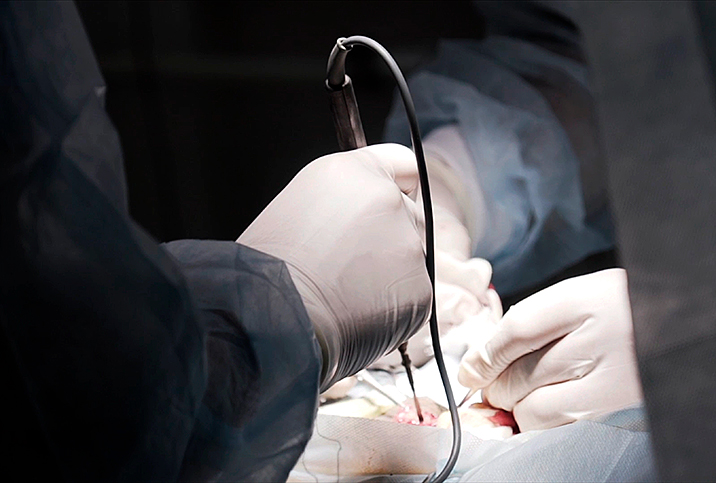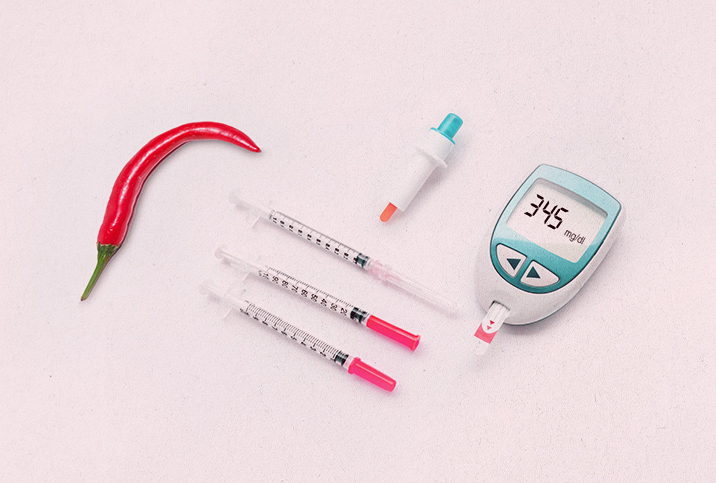How Is Peyronie's Disease Treated and Diagnosed?

Peyronie's disease is a condition of the penis that affects some men—typically those in their 40s or older—in which their erect penis changes shape. The primary symptom of the condition is that the erect penis develops with a new curve, bend or hourglass shape.
Fine, but how is Peyronie's disease treated and diagnosed?
The underlying cause is a buildup of scar tissue or plaque on the internal structure of the penis shaft known as the tunica albuginea. This scar tissue grows in one spot until it eventually pulls the shaft in a new direction when the penis is erect.
Peyronie's can be painful, especially in the early (acute) phase and can prove bothersome in other ways. For instance, it can cause curvature so profound that it hampers a man's ability to have penetrative sex or causes pain for him or his partner when they attempt it.
Many treatments are available for those with a more pronounced curve, but if the curve is fewer than 30 degrees, aggressive interventions are not recommended. Indeed, millions of men come to live with the new shape of their penis. The condition is estimated to affect about 1 in 10 men, and even that figure is considered widely underestimated.
How is Peyronie's diagnosed?
Diagnosing Peyronie's disease starts with some questions from your healthcare provider about the appearance of your erect penis. They might include the following:
- How long since you first noticed the bend in your penis?
- Do you think you've lost any length? If so, how much?
- How many degrees would you estimate the curve is?
- Does it make sex difficult or painful for you? For your partner?
- Do you experience erectile dysfunction (ED)?
- Typically, how firm are your erections?
- Do you know of any family history of Peyronie's or Dupuytren contracture (another connective tissue disorder that may be correlated with Peyronie's)?
Your healthcare provider will probably perform a physical exam, feeling for the spot where the scar tissue is. They may order a Doppler ultrasound exam to help pinpoint exactly where the scarring is, check for a buildup of calcium and determine how the blood is flowing in your penis.
It's possible your provider will need to examine your penis in its erect state before being able to make a recommendation for treatment. They may ask you to take a picture of it at home, or they may give you a medication that will make it erect at your appointment.
Peyronie's disease has two distinct phases: acute and chronic.
Acute phase of Peyronie's disease
The acute phase usually persists for six to 12 months and is the period when scar tissue forms. The curve, or shape of the penis, is currently changing at this point and hasn't settled into its final form.
Chronic (stable) phase of Peyronie's disease
During the chronic phase, the scar growth is complete and, barring further incidents or new tearing of the tunica, the curvature you have now won't change anymore due to Peyronie's.
"The first thing you need to do is establish if the patient is in the acute phase or the stable phase of Peyronie's disease," said Neel Parekh, M.D., a men's fertility and sexual health specialist with Cleveland Clinic. "Typically, we don't recommend any kind of invasive treatment in that time, because there are still changes occurring to that plaque and to the curvature. So, we typically recommend conservative management, which can be stressful for a lot of guys. It's a kind of 'hurry up and wait' situation, but that's what the guidelines recommend."
How is Peyronie's disease treated?
While there's no cure or definitive treatment during the acute phase, there are a handful of methods urologists can use to help, including over-the-counter and prescription medications and traction devices.
"If they're having pain, I'll recommend anti-inflammatories like ibuprofen, and I can also offer low-intensity shockwave for the painful component of Peyronie's," Parekh said.
He was quick to add that data is lacking to support the use of shockwaves to treat the actual curvature of the penis (as some commercials seem to claim), but the treatment can help with the pain.
ED often accompanies the onset of Peyronie's. It can be treated with a 5 milligram daily dose of tadalafil (Cialis), which helps maintain blood flow and penile elasticity while the scar settles out.
Some guys in the acute phase might benefit from traction devices such as Restorex or vacuum erection devices, Parekh said; they are nonmedical and nonsurgical. If used correctly for several months, they can encourage the scar tissue to break up, help reduce the curvature, help men get back some length and help with erectile function.
These traction devices are also an option during the chronic phase.
Deciding on what, if any, treatment to choose once you've reached the chronic phase of Peyronie's comes down to an assessment of each patient's symptoms.
"Once it's in the stable phase, the first thing you need to do is see if it's bothersome to them or their partner," Parekh said. "There's obviously a lot of natural curvature for a lot of guys, and it doesn't impede their ability to penetrate during intercourse, and it doesn't cause pain. Same with Peyronie's. If they're still able to penetrate and they're not having issues, then I don't recommend any treatment at all."
There are several types of medication-based treatments that may help break down the scar tissue in the penis.
Collagenase injections (Xiaflex)
Xiaflex is administered as an injection directly into the penis, usually a course of two injections per week for eight weeks, which may help break up scar tissue.
Interferon injections
A protein that helps to reduce scarring and swelling, interferon is sometimes the choice for treating Peyronie's.
Verapamil injections
Verapamil is a blood pressure medication, but for some men it offers relief from the pain of Peyronie's. It may help reduce the curvature, as well.
All of the injection-based solutions are contingent on the man having good erections, Parekh said.
"If the patient has erections that are very poor and you fix the curve, they're still not going to be able to have sex due to their ED," Parekh said. "That's when a penile implant can also be used to correct the curvature."
Beyond medications, surgical options are available for men who need them.
Penile implant
There are two types of penile implants, inflatable and noninflatable. They both require surgery but allow the man to choose when to get an erection, and they may straighten the Peyronie's-affected penis, as well.
Plication
If you have reliable erections, your provider may recommend plication, a procedure that shortens the unaffected side of the penis. It can be performed one of two ways. In one procedure, tiny stitches are inserted on the unaffected side of the penis to pull it closer to even with the short side. In the other, the surgeon takes tiny pieces of tissue from the unaffected side and stitches the gap back together to get the same effect.
Some possible complications include loss of length, loss of penis sensitivity and reduced erectile function.
Grafting (lengthening the affected side)
This type of surgery is usually recommended for men who have severe curvature or if their shaft is particularly narrow or short. The surgeon will cut into the scar tissue on the short side and excise some of it. Then, they replace that portion of the tunica albuginea with some kind of tissue, usually a vein or pig intestine, crafting it so the length matches the longer side.
Conclusions
If there's a primary takeaway, let's hope it can be normalizing the conversation around Peyronie's disease. Men should be assured that it is a much more common condition than they might think. It is certainly no reason for embarrassment, especially when talking to your healthcare provider.


















